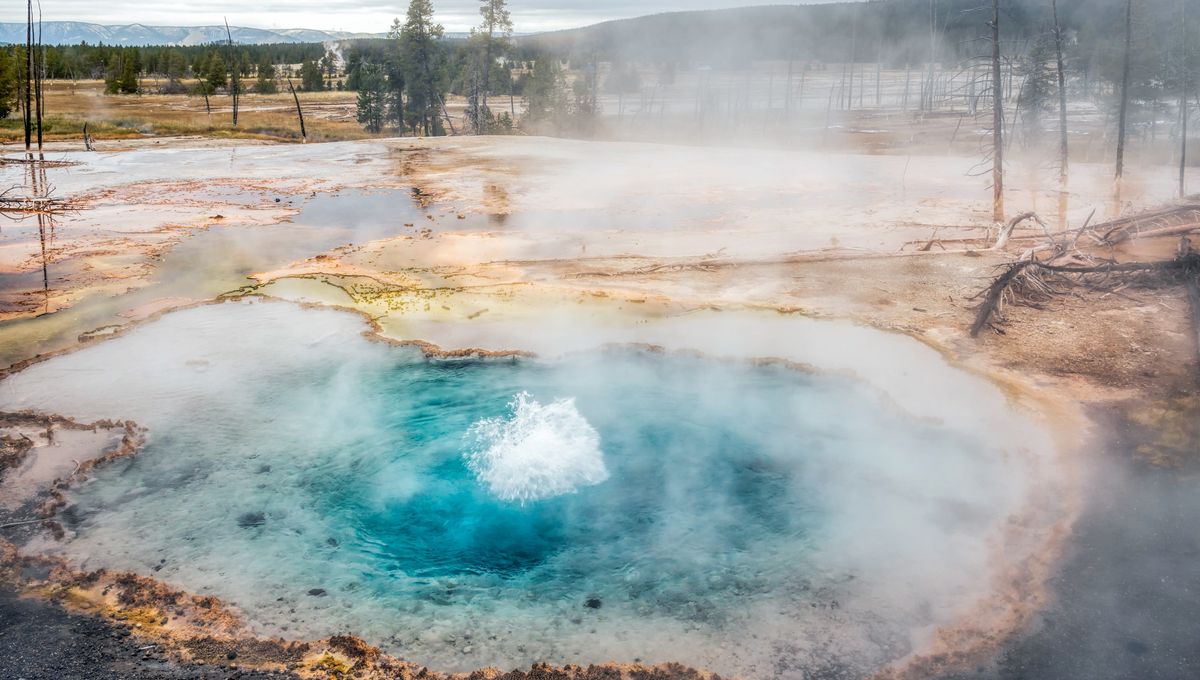
In the bubbling, super-acidic hot springs of Yellowstone National Park there lives a strange gang of viruses with an ancient origin. Because thermophiles – organisms that thrive at scorching hot temperatures – are deeply rooted in the evolutionary “tree of life,” it might even be possible to learn about the origins of life by studying these microscopic freaks.
If there’s life, there’s a good chance you’ll find viruses, which cannot reproduce without a host. This remains true in the harsh environment of Yellowstone’s geothermal springs, where the most abundant life form is a class of single-celled red algae, Cyanidiophyceae.
In a new study, a team of scientists studied samples from Lemonade Creek in Yellowstone National Park to better understand the interactions between Cyanidiophyceae and the local viruses.
Among three neighboring habitats – the creek, inside rocks, and soil – they found unique collections of viruses, with the giant viruses (Megaviricetes) being the most dominant.
“A major finding of our study is that even though different habitats at hot springs may be adjacent (within centimeters of each other) and visually dominated by Cyanidiophyceae, multiple, divergent virus classes exist at these sites that are often habitat specific,” the study authors write.
“Megaviricetes is the dominant class at Lemonade Creek, suggesting they may infect and influence red algal population dynamics,” they added.
The Cyanidiophyceae algae at geothermal sites originated at least 1.5 billion years ago, so it’s likely the viruses emerged around a similar time to accompany them. Life on Earth evolved over 3.8 billion years ago, but the appearance of this virus-host relationship is still relatively early in the evolutionary story of our planet. After all, multicellular animals did not appear until about 600 million years ago.
Looking at the genes of the viruses, the researchers were able to see how they became adapted to thermophilic life.
Their proteins show that the viruses belong to an extremely old lineage that evolved the heat-loving ability very early on. This suggests the viruses didn’t move into the hot springs after spending much of their existence in cooler environments; the viruses are seasoned spring-dwellers that have thrived here for a very, very long time.
Interestingly, some of the viruses are related to other thermophilic viruses that live deep within the ocean around hydrothermal vents. Hydrothermal vents contain the ideal conditions and a soup of key molecules that have the potential to allow life to be created from inorganic chemicals, so it’s thought that thermophilic microbes in the deep sea may have been among the first life forms on Earth.
Viruses aren’t technically alive, but they have played an integral part in many biological processes and had a huge influence on the evolutionary tree of life, most notably the lateral transfer of genes. As such, it’s possible that the hot spring viruses at Yellowstone – relatively close relatives of the viruses that linger around hydrothermal vents – may provide an invaluable insight into Earth’s earliest life.
The study is published in the journal Communications Biology.
Source Link: Giant Viruses With Ancient Origins Lurk In Yellowstone's Hot Springs